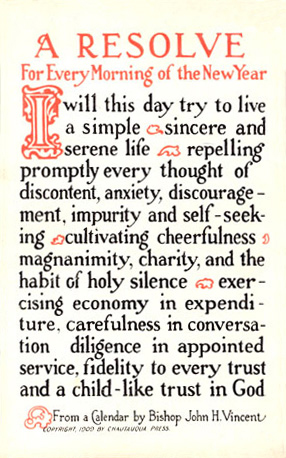by George Neame
Strange as it may sound, New Year’s celebrations have not always been held at the beginning of January. Ancient Babylonian calendars began in March and at this time, promises were made to their gods that they would return borrowed items, pay debts and apologise to those they had done wrong to. These are the first known New Year’s Resolutions that were made and since then, how New Year’s Resolutions are made, what they symbolise and what they intend to change have altered dramatically. Starting, as many common traditions, rules and practices do, with the Romans.
 |
| The two-headed Roman god, Janus (image source: billpetro.com) |
On Rome ’s oldest bridge, the Ponte Fabricio joining Tiber Island
It was with the spread of Christianity that New Year’s resolutions started to take on a more purposeful, widespread meaning that was common throughout the people. By the fourth century, when the Roman Empire took Christianity as its official state religion, prayer and fasting began to mark the New Year with the observation of the Feast of the Circumcision on January 1st to celebrate the naming of Jesus. This came accompanied with confessions from the past year and making resolutions to God for the year ahead.
 |
| An early New Year's resolution postcard (source: Wikipedia) |
The notion of resolutions at the beginning of a New Year continued to grow and spread across countries and, by the medieval period, the last feast of Christmas meant Knights were required to take their ‘peacock vow’. By placing their hands on a peacock and vowing to continue their chivalry and commitment, they made a resolution to carry on defending their country, a pledge to their rulers and those they defended.
It is commonly thought that the first written list of resolutions to be made by one person for his own morals was made by Jonathan Edwards. An American Puritan, Edwards gradually compiled a list of around 70 resolutions over a period of two years that he aimed to commit himself to, such as ‘Resolved, always to do what I can towards making, maintaining and establishing peace’. From here, it became more and more common for people to make promises to themselves that would improve their lives and improve their morality and at the end of the nineteenth century and the beginning of the twentieth, New Year’s Resolution postcards began to emerge, which people could send to one another informing them of the promises they had made.
By now, New Year’s Resolutions have become much more specific. Giving more to charity, losing weight and dropping bad habits are all common resolutions. But is that specificity actually useful? Richard Wiseman’s 2007 study showed that 88% of those who set New Year’s Resolutions do not succeed. Many smokers continue to smoke, many overweight people do not get any thinner, and many people who intend to ‘learn a foreign language’ get little further than ‘bonjour’ or ‘guten tag’.
All pessimism aside, many New Year’s Resolutions are achievable if they are realistic. Most people find it easier to set pragmatic, quantitative goals that can be reached. Rather than just the wishy-washy ‘give more to charity’, ‘become a monthly Oxfam donor’ will give conclusive results. Don’t promise to ‘give up all chocolate’, promise to ‘cut down and eat a maximum of one chocolate bar per week’. Some people are not satisfied with just marginally reducing fat intake though, and that is OK. Edwards’ resolution to ‘maintaining and establishing peace’ may have been optimistic, but why not dream big? You can still aim to become a professional footballer, or marry Harry Styles, or get into University, but maybe have a smaller-scale project on the go at the same time.
Whether making your resolutions to Janus, your superiors, God or just yourself, as long as it is something achievable, something you really want and something you are willing to work hard for, you are almost certain to achieve it.
Very accurate and detailed
ReplyDelete